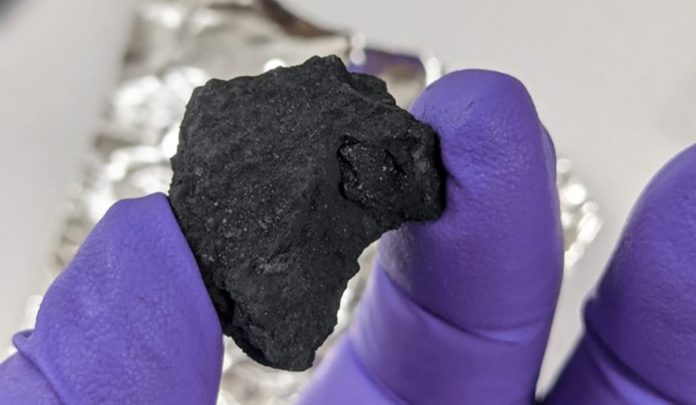A meteor that struck the UK in late February with a rare combination of minerals could give scientists a glimpse of what the solar system looked like about 4.6 billion years ago, according to a team of scientists from the country’s Museum of Natural History.
It is the first time in 30 years that a meteorite has been recovered in the UK. It fell into the driveway of a Gloucestershire county house, its fragments weighing just under 300 grams. Now they have come to the museum so that they can be studied.
- Does This Mean We Stopped Being Animal and Started Being Human Due to ‘Copy Paste’ Errors?
- The One Lifestyle Choice That Could Reduce Your Heart Disease Risk By More Than 22%
- Aging: This Is What Happens Inside Your Body Right After Exercise
- Immune-Boosting Drink that Mimics Fasting to Reduce Fat – Scientists ‘Were Surprised’ By New Findings
- Gun Violence in America: What They Don’t Talk About at the Debate
It is a carbonaceous chondrite, which makes this cosmic matter even more scientifically valuable. To date, it is known that some 65,000 meteorites managed to reach the surface of the Earth, and only 51 of them are carbonaceous chondrites, explains researcher Sara Russell.
“It is almost mind-blowingly amazing, because we are working on the asteroid sample return space missions Hayabusa2 and OSIRIS-REx, and this material looks exactly like the material they are collecting,” highlights the scientist in a statement published by the Museum of Natural History.
The Hayabusa 2 returned to Earth in December 2020 with a small collection of space rock weighing only 4.5 grams, while OSIRIS-REx is scheduled to land in 2023 with more than 60 grams of cosmic material.
According to scientist Ashley King, the object looks a bit like coal. The space rock likely contains soft clay minerals, and this suggests that it was once filled with frozen water. It is a characteristic of carbonaceous chondrites that are formed as a result of a mixture of minerals and organic compounds, including the basic components of life: amino acids.
“It is really black, but it is much softer and is really quite fragile. It is exciting for us because more this type of meteorite is incredibly rare but hold important clues about our origins,” Ashley explains.
Carbonaceous chondrites originated on an asteroid when the planets were just being born when the dust and ice that swirled around the early solar system began to merge. This makes them the most pristine materials and can provide unique information not only on where water and the building blocks of life formed but also on the composition of the planets.
“Meteorites like this are relics from the early solar system, which means they can tell us what the planets are made of. But we also we think that meteorites like this may have brought water to Earth, providing the planet with its oceans,” explains Sara.
The fact that the object survived its descent and was recovered is an even rarer event considering its fragile structure, according to scientists. This is likely due to the relatively slow speed at which it was traveling when it collided with Earth. It is believed that it was moving at about 13 km/s.
The speed of these meteorites can reach “70 kilometres per second, so if this really soft rock had been travelling that fast, it would have been completely destroyed in the atmosphere,” says Ashley.
- Does This Mean We Stopped Being Animal and Started Being Human Due to ‘Copy Paste’ Errors?
- The One Lifestyle Choice That Could Reduce Your Heart Disease Risk By More Than 22%
- Aging: This Is What Happens Inside Your Body Right After Exercise
- Immune-Boosting Drink that Mimics Fasting to Reduce Fat – Scientists ‘Were Surprised’ By New Findings
- Gun Violence in America: What They Don’t Talk About at the Debate
To date, a collaboration between the six UK Fireball Alliance (UKFAll) and fireball camera networks has failed to determine which asteroid the chunk of matter came from but has revealed that it came from the outer regions of the belt that it lies between the orbits of Mars and Jupiter. The matter is now expected to contribute to the studies that will be carried out with the Hayabusa 2 samples and those that will arrive with OSIRIS-REx.
